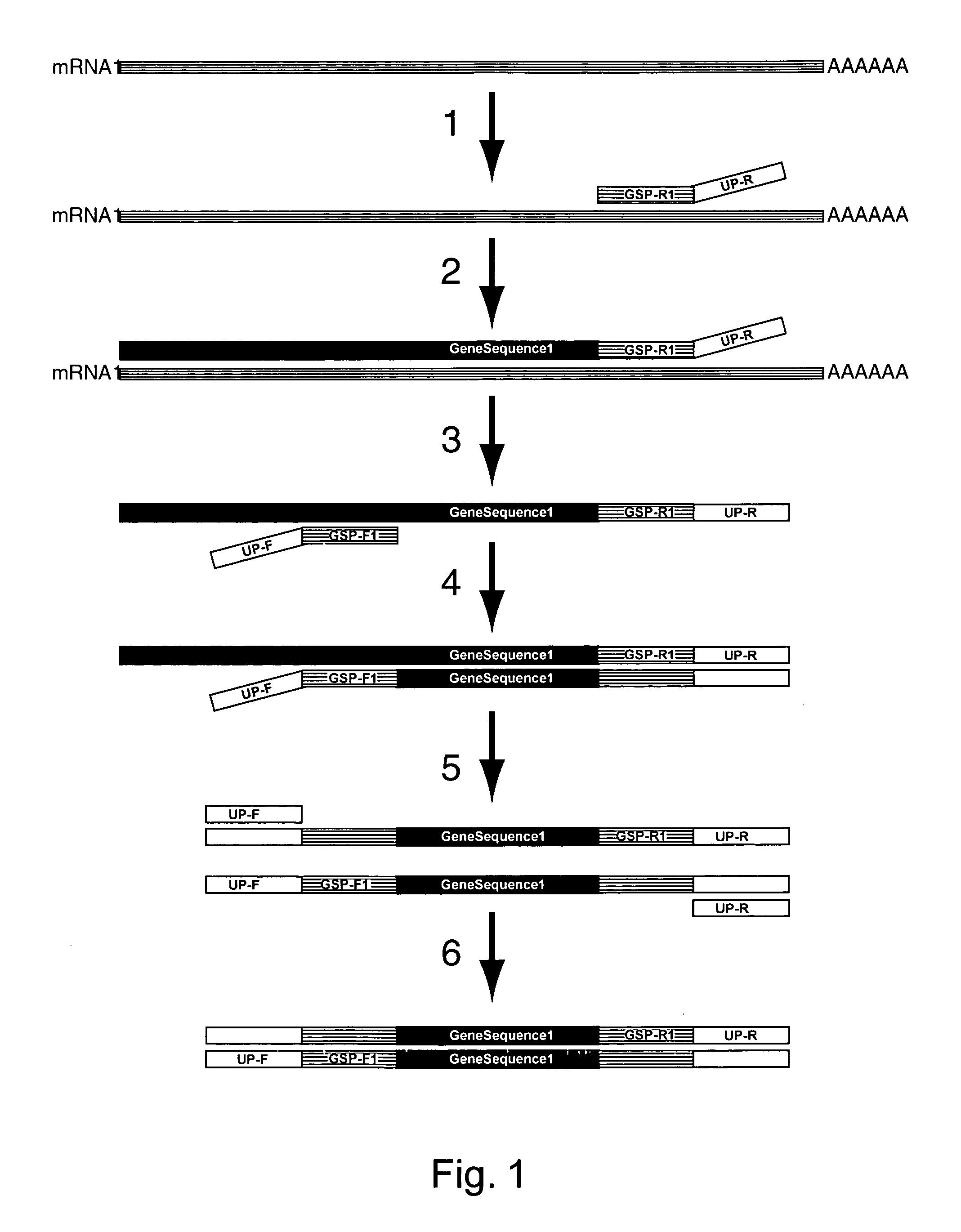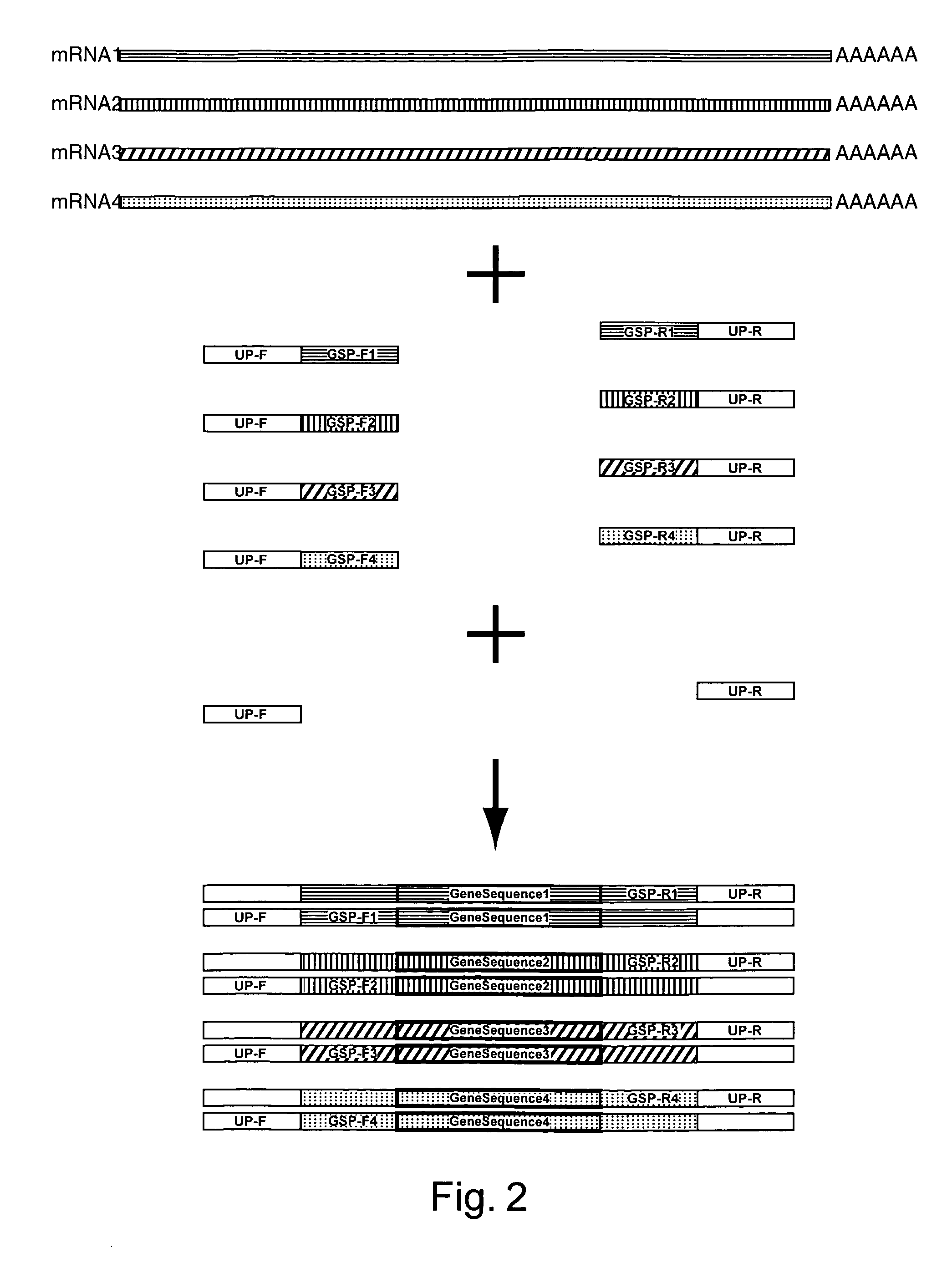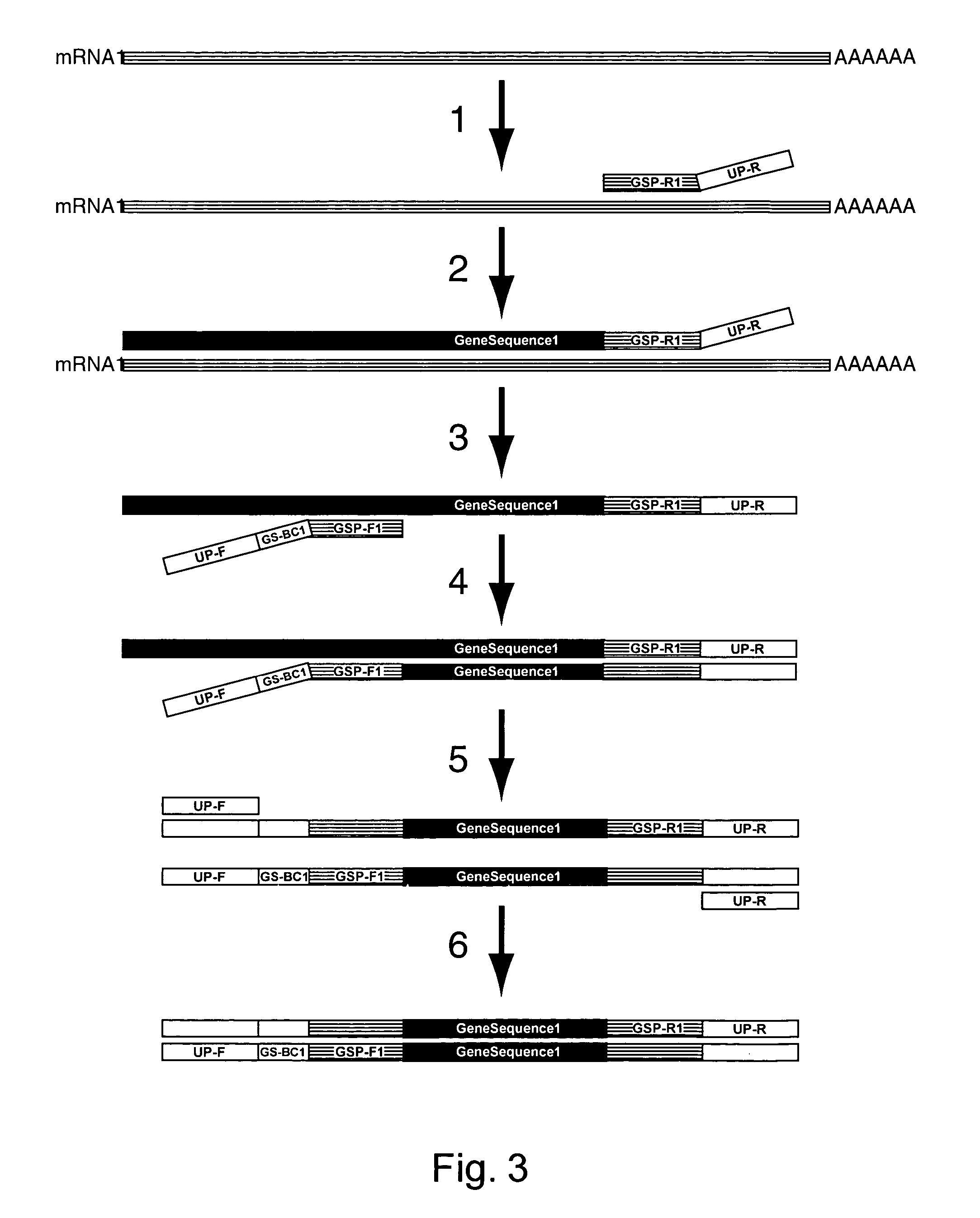Expression profiling using microarrays
a microarray and expression profiling technology, applied in the field of gene expression analysis, can solve the problems of limiting the types of sources for which rna analysis can be performed, limiting the number of samples that can be analyzed in microarray format, and the current microarray sample labeling method is quite expensive, so as to achieve cost-saving effects
- Summary
- Abstract
- Description
- Claims
- Application Information
AI Technical Summary
Benefits of technology
Problems solved by technology
Method used
Image
Examples
example 1
Amplification of an RNA Target using Multiplex, Universal Primer Driven PCR
[0248]Total RNA was obtained from culture cells using an RNA isolation kit (RNeasy®, Qiagen; Valencia, Calif.). Twenty ng of isolated RNA was then used first in a reverse transcription reaction, followed by a PCR amplification. These reaction conditions were as follows:
[0249]Reverse Transcription Reagents
[0250]Volume of Reaction: 20 μL
[0251]Gene Specific Reverse Primer Concentration: 0.05 μM (each primer)
[0252]Buffer Conditions: 1×PCR buffer II (10 mM Tris-HCl, pH 8.3; 50 mM KCl)
[0253]MgCl2: 2.5 mM
[0254]dNTP's: 1 mM
[0255]DTT: 0.01M
[0256]RNase Inhibitor: 0.1U
[0257]MMLV Reverse transcriptase: 1U
[0258]
Thermal cycle conditions48° C.1 minute37° C.5 minutes42° C.60 minutes95° C.5 minutes4° C.end
[0259]PCR Reagents
[0260]Volume of Reaction: 20 μL
[0261]Amount of cDNA used: 10 μL (of 20)
[0262]Chimeric Gene-Specific, Universal Forward Primers Concentration:[0263]0.02 μM (each primer)
[0264]Buffer Conditions: 1× PCR buffer...
PUM
| Property | Measurement | Unit |
|---|---|---|
| Tm | aaaaa | aaaaa |
| fluorescence | aaaaa | aaaaa |
| size | aaaaa | aaaaa |
Abstract
Description
Claims
Application Information
 Login to View More
Login to View More - R&D
- Intellectual Property
- Life Sciences
- Materials
- Tech Scout
- Unparalleled Data Quality
- Higher Quality Content
- 60% Fewer Hallucinations
Browse by: Latest US Patents, China's latest patents, Technical Efficacy Thesaurus, Application Domain, Technology Topic, Popular Technical Reports.
© 2025 PatSnap. All rights reserved.Legal|Privacy policy|Modern Slavery Act Transparency Statement|Sitemap|About US| Contact US: help@patsnap.com



